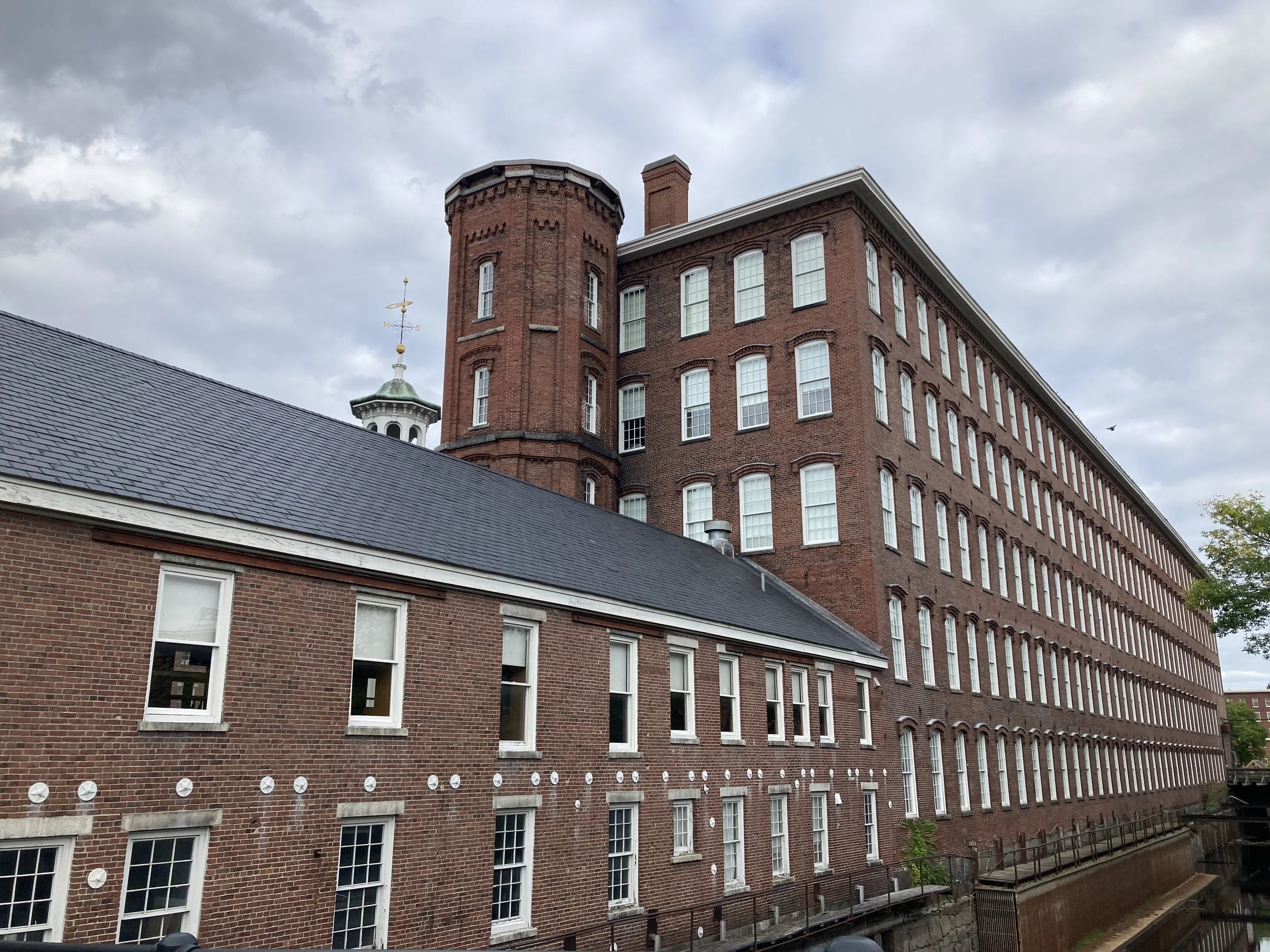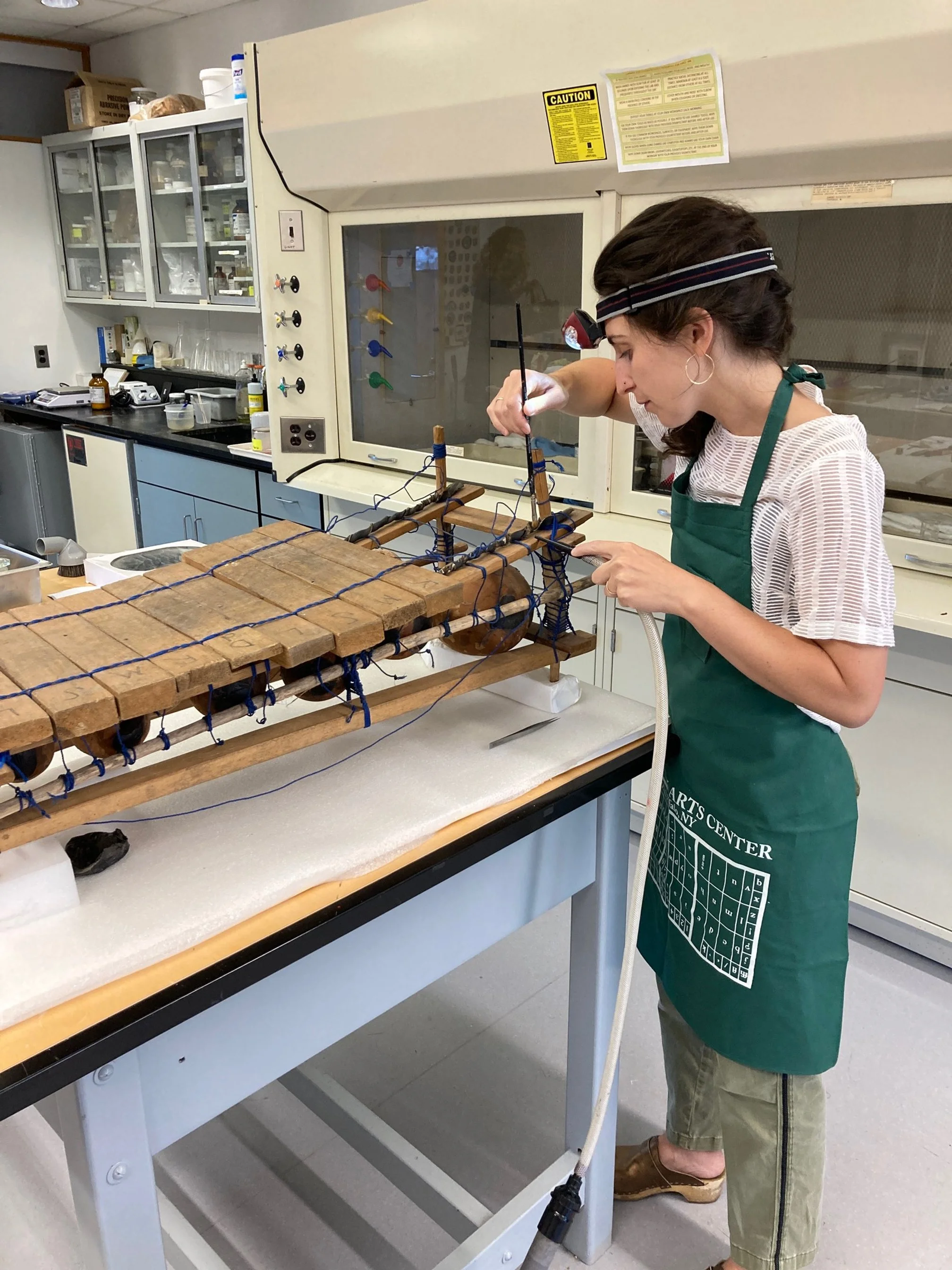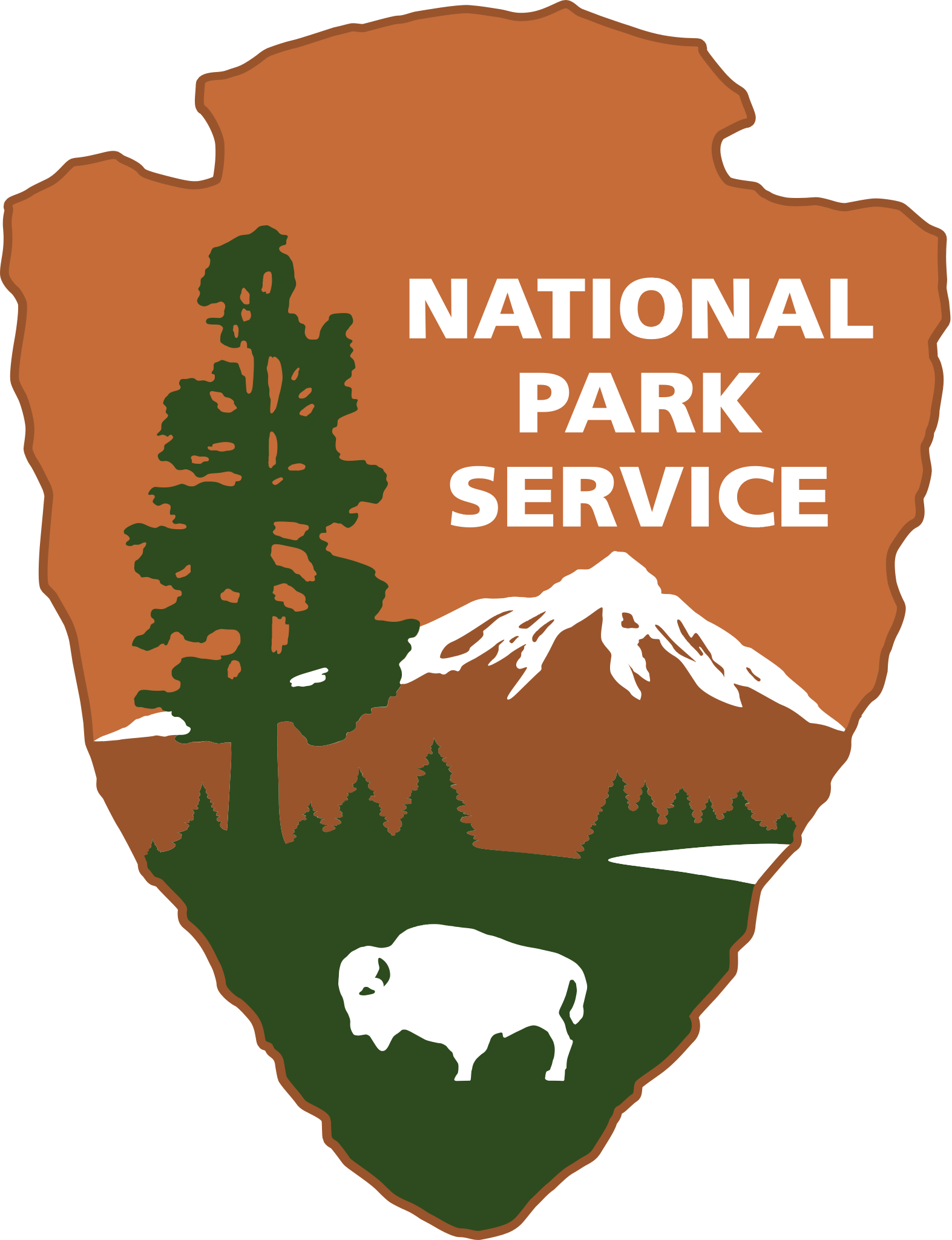
National Park Service: Historic Architecture, Conservation and Engineering
Fall 2022-current
The National Park Service (NPS) Historic Architecture, Conservation and Engineering (HACE) department is a resource for National Historic Sites (NHS) and National Historic Parks (NHP) from Maine to Virginia to Kentucky. While working with this department I was able to assist in many on-site projects as well as treating objects within the lab. I was able to visit and conduct site-specific treatments at Olmstead NHS, Bunker Hill Monument NHS, and Saugus Iron Works NHS. Based in Lowell, MA I treated ormolu light fixtures from the Vanderbilt Mansion NHS in addition to the project outlined below.
Xylophone: Lowell NHP
This xylophone was donated to the Lowell National Historic Park (NHP) by a Ghanaian immigrant who brought this instrument to Lowell, MA in the 1990’s. In the Fall of 2023 there will be an exhibit focused on immigrants living in Lowell, MA and the cultural traditions that they bring to the city.
Sticks and mismatched dimensions of cut wood held together with blue synthetic rope provide the structure for this xylophone. Thick wooden tone bars, labeled with marker and with red pen indicate their tone, have been hollowed out near the center to assist with resonance. Dried-out, hollow, gourds, also labeled with a variety of writing media, are suspended under the tone bars using the blue synthetic rope. There is a resourceful use of material in the creation of this xylophone. Including split and twisted bike tires that acts as padding for the tone bars. As well as sections of black plastic bags used to cover holes in the sides of the gourds. For areas where the adhesive used to secure the black plastic had failed and thick white tacky adhesive was used, which closely resembles chewing gum.
After before treatment documentation I could begin surface cleaning every angle of this belonging. To access the insides of the hollow gourds, the tone bars were removed one at a time. This allowed for every angle to be surface cleaned using a soot sponge as well as dry brushed and a HEPA filtered Nilfisk vacuum with a rheostat. The upward facing surfaces of the gourds had attracted large amounts of dust, dirt and debris and were cleaned with a cotton swab lightly dampened with DI water. Due to the solubility of some of the writing media on the gourds, they were cleaned carefully around. Caked on tan colored dirt was left on the gourds to preserve history of place and of use.
A 1% methyl cellulose in DI water was applied using a brush to areas of areas of detached black plastic film. After application, the plastic film was then pushed and smoothed into the desired location using fingertips. The thick, white, tacky that was used to secure some of the loose black film was left in its original location. I coated areas of degraded and crumbling tire with a BEVA D-8 diluted with DI H2O and applied with a brush. The wooden rail beneath the tire lengths was protected during BEVA application by inserting a sleeve of silicone release mylar between a rail and its tire. Each tone bar could then be returned to its original location and aligned the blue rope with wear lines and graphite lines what were drawn on the surface of some of the bars.
Two lengths of blue rope were missing and it was requested to replace them. I chose to fabricate the replacement rope using a lightweight Japanese tissue. Two lengths of tissue were dampened with a 1% methyl cellulose in DI water solution and twisted into a “z” twist to match that of the existing blue rope and clamped to dry. Once dry, a small amount of the methyl cellulose solution was applied to the two lengths of tissue, and they were then twisted together in a “z” twist and again clamped to dry. The Japanese paper roper was then toned using Golden acrylics (cobalt, raw umber, titanium buff). Lascaux 303 was then applied to the toned rope strands to add strength, but also to match the existing gloss of the synthetic blue rope. I then tucked the ends of the Japanese tissue replacement rope behind the existing ends of the broken rope on the xylophone. This mechanical join (no use of adhesive) is easily removed and provides aesthetic improvement to the object. The xylophone was then ready for after treatment written and photographic documentation.
Special thanks
To Karen Fix, Margaret Breuker, Joannie Bottkol, Caitlin Sofield, and Annika Blake-Howland in the objects conservation lab for their guidance with the treatments conducted with the National Park Service. To the Student Conservation Association for providing me with access to health insurance, resources and a network of individuals practicing conservation and preservation within the parks.






